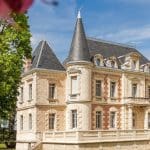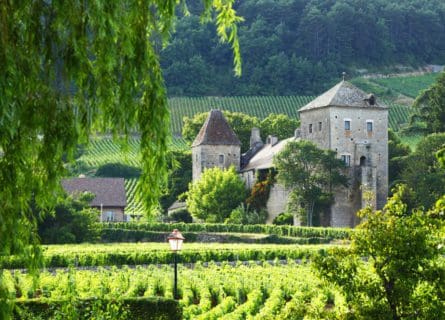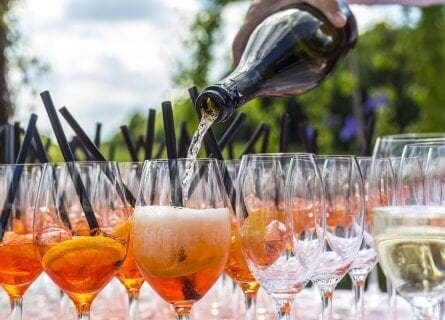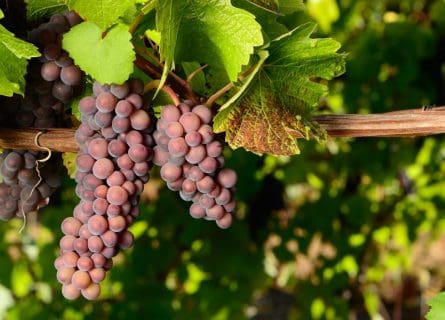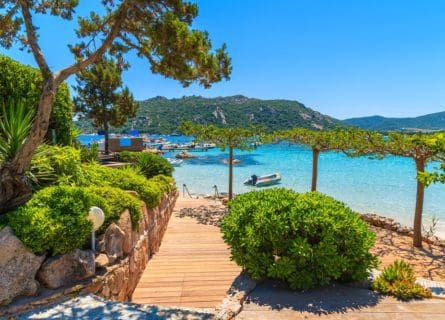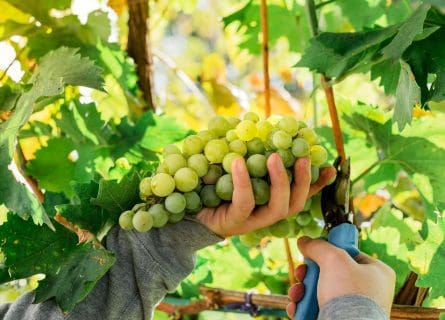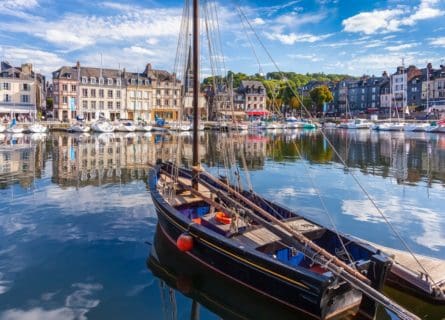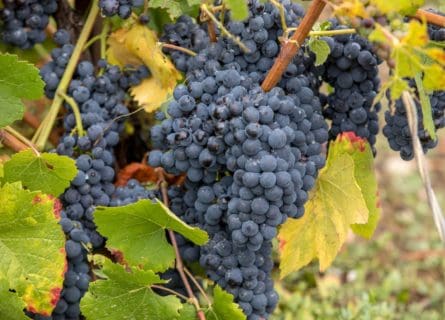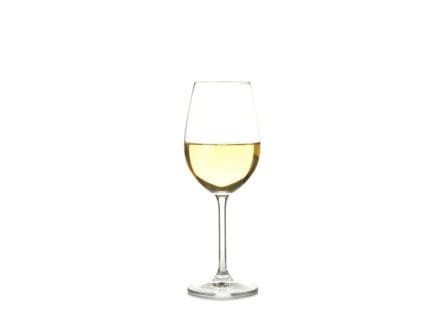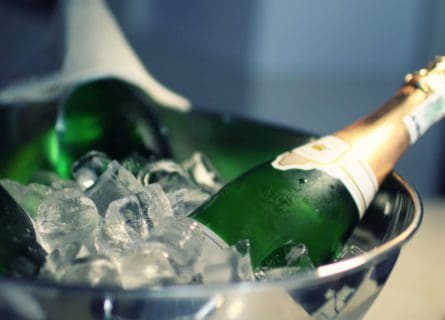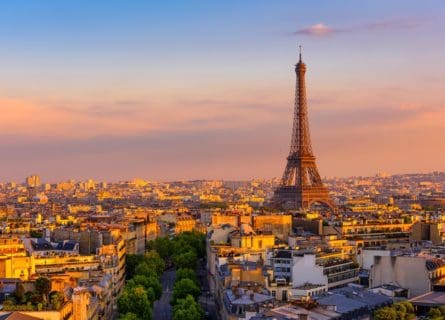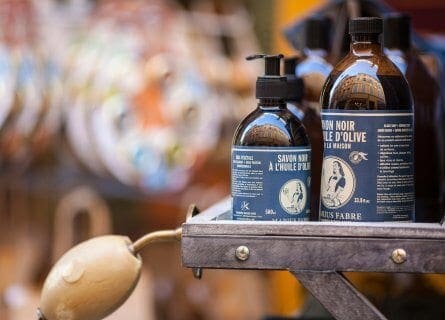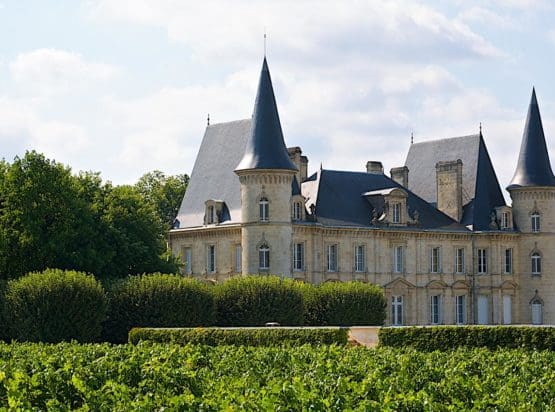
Chateau Latour Winery Guide
EXPLORE ALL OUR RECOMMENDED FRENCH WINERIES
Last updated: November 24, 2023
Winery Overview
It is difficult for even the most well-traveled sybarite not to feel a sense of awe when first approaching the entrance to Chateau Latour. This is arguably the most legendary wine in the Medoc if not Bordeaux. Many who obsess over Latour have never sampled a drop, but Cellar Tours can vouch for its immense power, structure, and inimitable depth of flavor. The iconic tower – the world’s most famous dovecote – was built in the 1600s and has seen centuries of fortune and glory, neglect, political uprisings, Two World Wars, and many owners. If the tower could talk, it would have a lifetime’s worth of secrets to share.
Today, if you stand opposite the tower and gaze at the estuary, you’ll encounter a sea of hallowed vines. The core of the estate is the 45-hectare ‘L’Enclos,’ which is close to the chateau and chai – it is said to be the finest terroir in the Medoc, partly due to the moderating influence of the Gironde estuary. Incredibly, vines were planted at Latour as far back as the 14th century; the estate may have been one of the first to cultivate vineyards in Pauillac, and the first key recorded moment in Latour’s history occurred in 1670 when the property was put up for sale. After the buyer’s death, Francois de Chavannes passed by marriage to the Clauzel family.
In the late 17th century, Lafite and Latour’s destinies became intertwined when the heiress to Latour married the owner of Lafite, Alexandre de Segur. However, in the 18th century, de Segur died, and the two estates were separated. During the French Revolution, the owners of Latour were noblemen married to Segur’s daughters, the latter preferring not to get involved in the chateau’s day-to-day running. Generation succeeded generation, but Latour remained in family hands. In 1842, a company was formed to ensure that the estate could not be sold off wholesale, and this company bought back some of the shares that had been sold. The descendants of Segur were determined that their legacy should not fall into rival hands; many wealthy aristocrats jealously coveted ownership of Latour in the 19th century. By this era, the Grand Vin fetched handsome prices in Europe, creating healthy profits for its owners. Its renown was second only to Lafite – in the eyes of some wealthy buyers, Latour was the better wine. In 1864, the present chateau was built, which is surprisingly modest by the standards of Pauillac.
Yet, the 20th century brought hardship and fortune in equal measure. Phylloxera arrived relatively late at Latour in the 1920s, forcing the owners to replant the entire vineyard on American rootstocks. By the 1950s, the ownership of Latour was becoming increasingly fragmented, with over 65 shareholders. The purchase of shares by British firms such as Pearsons and Harveys of Bristol in 1962 proved exceptionally fortuitous for Latour. The new owners invested heavily in the estate, replanting vineyards and updating equipment.
Nevertheless, by the early 1980s, Latour was struggling. Under the new ownership of Allied Lyons, Pearsons did not have the necessary finance to invest in Latour and produce wines worthy of its name. In 1983, the property was bought by billionaire industrialist Francois Pinault. He remains the owner of Latour today, a man who has done a great deal for the reputation of Pauillac’s most famous wine. Hiring Frederic Engerer as general manager – now CEO – was to prove to be a masterstroke. Engerer took Latour to new heights, overseeing the construction of a new winery and performing a detailed soil analysis of 80 plots within L’Enclos. As a result, the parcels are now handled differently according to their specific character, which has made an enormous difference to the wine quality. Indeed, Latour has always been excellent; however, vintages released over the past 15 years now vie for the title of the finest red wine on earth.
The ‘secret’ to Latour’s power and grandeur is no secret at all: the forty-five-hectare L’Enclos, which is an exceptional terroir and arguably the finest place in Europe to grow Cabernet Sauvignon, is responsible for the chateau’s global fame. With abundant gravel, excellent drainage, and proximity to the Gironde, Latour monopolizes near-perfect growing conditions. The resulting wine is bottled poetry – imagine a majestic nose of fruit cake and coffee in maturity, backed up with immense concentration, fire and spice, a silky structure, and unrivaled length. The best vintages need decades to show themselves, yet Latour makes a reliably- excellent wine even in poor years. The ability to produce great wine in dismal vintages is why this estate is the most critically lauded in the Medoc. The Grand Vin is astonishingly expensive; that much is true, but there will never be a shortage of eager buyers for Chateau Latour.
Wines produced
-
Chateau Latour(Grand Vin)
(Vintage dependant) but typical blend: 90% Cabernet Sauvignon, 5-10% Merlot, 4% Cabernet Franc, 1% Petit Verdot. Only the best, hand-harvested fruit is used, fermented in separate stainless steel tanks for each parcel of vines. After fermentation, malolactic fermentation occurs in vats before the Grand Vin is aged in 100% new French oak. After release, Chateau Latour can be cellared for several decades. -
Les Forts de Latour (Second wine of the property)
(Vintage dependant) but typical blend: 65-70% Cabernet Sauvignon, 25-30% Merlot, 4% Cabernet Franc and 1% Petit Verdot. The wine utilises only the best, hand-harvested fruit, taken from separate plots used to make the Grand Vin. The must is fermented in separate stainless steel tanks and aged in 50% new French oak. Les Forts de Latour is more accessible upon release, but can also age for a considerable period of time. -
Pauillac de Latour (Third wine of the property)
(Vintage dependant) but typical blend: 50-60% Cabernet Sauvignon, 40-45% Merlot, 4% Cabernet Franc and 1% Petit Verdot. Hand-harvested fruit from younger vines is used to make the third wine, fermented in stainless steel tanks and aged in typically 20% new French oak. Accessible upon release, the third wine offers exceptional value.
Winery Contact Details
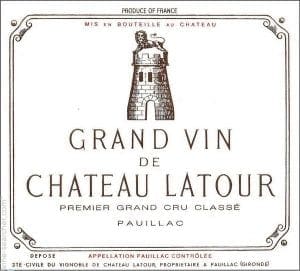
Chateau Latour
27 Route des Châteaux33250 Pauillac
Bordeaux, France
Email: [email protected]
Tel +33 (0) 5 56 73 19 80
Fax +33 (0) 5 56 73 19 81 Find out more
Facts & Figures
Appellation
AOC Pauillac / First Growth
Founded
14th century (vineyards first planted)
Area under Vine
92 ha vineyards
Age of vines
Oak barrel origin
Winemaker
Owner
Francois Pinault
Production
350,000 bottles per annum
Grape varietals
Cabernet Sauvignon, Merlot, Cabernet Franc, Petit Verdot
Grape Varieties Used by the Winery
-
Cabernet Franc
Cabernet Franc grape is a close relative of Merlot and Cabernet Sauvignon and is the principal blending grape used in Bordeaux.
Find out more -
Cabernet Sauvignon
Discover the irresistible allure of Cabernet Sauvignon—a worldwide favorite with robust, dark-bodied flavor. Unleash your wine journey today!
Find out more -
Merlot
Merlot is the most cultivated grape in Bordeaux and closely related to Cabernet Franc
Find out more -
Petit Verdot
Petit Verdot is a full-bodied red wine grape varietal used in classic Bordeaux blends and originates in southwestern France
Find out more
Winery Appellations
-
 Discover Pauillac, the crown jewel of Bordeaux wine regions—home to iconic estates like Chateau Latour & hidden gems. Plan your trip today! Read more
Discover Pauillac, the crown jewel of Bordeaux wine regions—home to iconic estates like Chateau Latour & hidden gems. Plan your trip today! Read more
Further Reading: Discover More Related Blog Content
More information
If you would like us to customize an exclusive luxury tour, contact us and let us know your travel plans. We offer luxury food and wine tours for private groups of a mininium two guests. In addition, all of our private, chauffeured tours are available year-round upon request.

